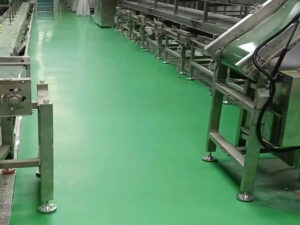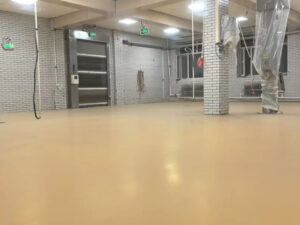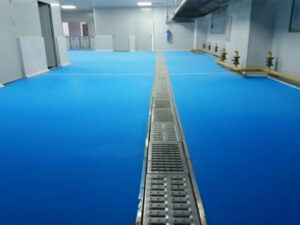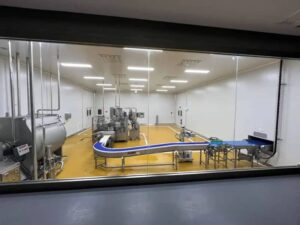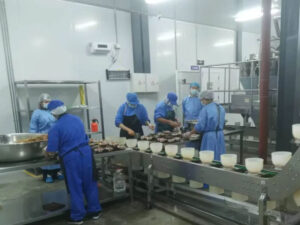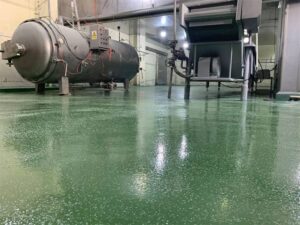مع توقع وصول السوق العالمي للطلاءات المثبطة للحرائق إلى $5.2 مليار دولار بحلول عام 2030 (5.21T3T3T معدل نمو سنوي مركب)، فإن فهم كيفية تأخير هذه الدهانات للانهيار الهيكلي أمر بالغ الأهمية للبناة ومديري السلامة. يغطي هذا الدليل الكيمياء الأساسية ومعايير التكلفة والحلول المتوافقة.
1. مقدمة: الدرع الخفي الذي ينقذ الأرواح في درجات الحرارة القصوى
عندما تصل درجات الحرارة إلى 650 درجة مئوية، يفقد الفولاذ غير المحمي 50% قوته في 5 دقائق - لكن الهياكل المطلية بطلاء مثبط للحريق معتمد تكسب 200% وقت إخلاء إضافي (NFPA). في مأساة برج غرينفيل في عام 2019، أدت الكسوة غير المتوافقة إلى تسريع انتشار الحريق؛ وعلى العكس من ذلك، نجت ناطحة سحاب في شيكاغو باستخدام طلاء PPG Pitt-Char® XP من حريق استمر 3 ساعات بأقل ضرر ممكن. 16
القيمة الأساسية: الطلاءات المثبطة للحريق فشل هيكلي بطيء عن طريق إنشاء حواجز عازلة، وشراء نوافذ الهروب الحرجة. فهي ليست "مقاومة للحريق" - فالمعايير الدولية تعترف فقط “مقاوم للحريق“ الوسم.
2. الآليات الأساسية: العلم الكامن وراء التوسع 50X
2.1 الدهانات المنتفخة: "درع التورم" ثلاثي المفعول "درع التورم"
عند درجة حرارة 200-250 درجة مئوية، تؤدي ثلاثة مكونات إلى تفاعلات متسلسلة:
- مصدر الحمض (على سبيل المثال، بولي فوسفات الأمونيوم/APP): يطلق حمض الفوسفوريك، مما يؤدي إلى تجفيف مصدر الكربون.
- مصدر الكربون (على سبيل المثال، خماسي الإيثريتول/بير): تشكل طبقة فحم قرص العسل (الموصلية الحرارية: 0.1 واط/م-كلفن (0.1 واط/كلفن)، بالقرب من الأسبستوس).
- مصدر الغاز (على سبيل المثال، الميلامين/ميل): ينبعث منها النيتروجين/الأمونيا، وتوسيع طبقة الفحم 50-100 مرة (1 مم → 5 سم). 15
دراسة حالة: يتمدد شيروين-ويليامز فايرتكس® M90 لإغلاق الأسطح بطبقة زجاجية زجاجية تخفض درجة حرارة الفولاذ بمقدار 300 درجة مئوية عند التعرض لمدة 120 دقيقة.
2.2 الطلاءات الأسمنتية: "الأحواض الحرارية" القائمة على المعادن
- الحشوات غير العضوية (الفيرميكوليت/البيرلايت): تمتص ≥400 كيلو جول/كجم من الحرارة أثناء التحلل.
- تفاعل الترطيب: يطلق بخار الماء عند درجة حرارة 100 درجة مئوية، مما يؤدي إلى تبريد الركائز.
الطلاءات المنتفخة مقابل الطلاءات الأسمنتية المثبطة للحريق: مقارنة كاملة
| المعلمة | الطلاءات المنتفخة | الطلاءات الأسمنتية | الاختلافات الرئيسية |
|---|---|---|---|
| السُمك | 0.5-3 مم (رقيقة للغاية) | 10-50 مم (ضخم) | Intumescent أرق من 90%، وهو مثالي للتصميمات الحساسة للمساحة. |
| مقاومة الحرائق | 1-2 ساعة (بسمك 3 مم) | 2-4 ساعات (بسمك 30 مم) | يوفر الأسمنت حماية أطول من الحرائق في حالات الحرارة الشديدة (مثل الحرائق الهيدروكربونية). |
| أفضل التطبيقات | الفولاذ المعماري، والعوارض المكشوفة، والهياكل الخشبية | الأنابيب الصناعية، والهياكل المخفية، ومصانع البتروكيماويات | تتفوق المواد المتوهجة في الرؤية الجمالية؛ الأسمنتية للاستخدام الصناعي عالي الحرارة. |
| الجماليات | القدرة على مطابقة الألوان، واللمسة النهائية الناعمة (85%+ الاحتفاظ باللمعان) | ملمس خشن، يتطلب كسوة | لا تحتاج المواد المنتفخة إلى غطاء تجميلي؛ بينما تتطلب المواد الأسمنتية تشطيباً ثانوياً. |
| المكونات الرئيسية | مصدر الحمض (APP)، مصدر الكربون (PER)، عامل النفخ (MEL) | الأسمنت، الفيرميكيولايت، البيرلايت، الألياف غير العضوية | تعتمد المواد المنتفخة على التمدد الكيميائي للفحم، بينما تعتمد المواد الأسمنتية على الامتصاص الفيزيائي للحرارة. |
| تعقيد التطبيق | إعداد صارم للسطح (السفع الرملي Sa2.5)، حساس للرطوبة/حرارة الجو | استخدام بسيط بالرش/المجرفة، يتحمل البيئات الرطبة | تتطلب المواد المنتفخة مهارات أعلى؛ بينما تناسب المواد الأسمنتية مواقع العمل القاسية. |
| الأثر البيئي | تركيبات ذات أساس مائي (مركبات عضوية متطايرة <50 جم/لتر)، منخفضة السمية | غبار الأسمنت، ارتفاع تلوث التركيب | تتوافق المواد المنتفخة مع معايير جودة الهواء الداخلي (مثل LEED). |
| التكلفة (لكل متر مربع) | $18-24 (تصنيف الحريق لمدة 2 ساعة) | $12-18 (تصنيف الحريق لمدة 2 ساعة) | الأسمنتية لها تكاليف مواد أقل ولكن احتياجات العمالة/الحجم الأعلى. |
| الصيانة | فحص سلامة طبقة الفحم كل عامين | عمر افتراضي يزيد عن 20 عاماً، ولكن يصعب إصلاحه | تتميز الأسمنتية بتكرار صيانة أقل ولكن إصلاحاتها مكلفة. |
| الشهادات | ul 263, astm e119, en 13381-8 | ul 263, astm e761, bs 476-20 | يفي كلاهما بمعايير مقاومة الحرائق الفولاذ الهيكلي. |
3. دليل الشراء الحرج: مطابقة الطلاءات مع الركائز
3.1 توافق المواد وتحليل التكلفة
| الركيزة | الطلاء الموصى به | التكلفة/م² (تقييم 2 ساعة/م²) | أفضل 2025 علامة تجارية |
|---|---|---|---|
| الفولاذ الإنشائي | مادة منتخمة ذات قاعدة مذيبة | $18-$24 | PPG Pitt-Char® XP 6 |
| خشب | أكريليك مائي الأساس | $16-$20 | نوليفير S603 (المركبات العضوية المتطايرة <50 جم/لتر) |
| الأقمشة | مستحلب بوليمر مرن | $12-$15 | فايرتيكت FRC-100 (ذاتي الإطفاء ≤2 ثانية) |
نصيحة توفير التكاليف: تبدأ الأكريليك ذات الأساس المائي (مثل طلاءات ألبي) من $16/م² لمطابقة 1 ساعة ASTM E84 - مثالية للتجديدات ذات الميزانية المحدودة. 26
3.2 متطلبات الاستدامة: حلول منخفضة المركبات العضوية المتطايرة
- العلامات التجارية المعتمدة بيئيًا: ZENOVA FP (مركبات عضوية متطايرة 22 جم/لتر، الاتحاد الأوروبي EC1+)، شيروين-ويليامز FIRETEX® M90 (خال من الهالوجينات).
- تقنية إعادة تدوير النفايات المعاد تدويرها: يستخدم Alutrex® مسحوق الألومنيوم المعاد تدويره 30%، مما يقلل من انبعاثات الإنتاج بمقدار 15%. 1
4. الامتثال العالمي: الإبحار في معايير الاعتماد لعام 2025
- أمريكا الشمالية: إلزامي UL 263 (السلامة الهيكلية) + ASTM E84 الفئة A (مؤشر انتشار اللهب <25).
- الاتحاد الأوروبي: EN 13501 الفئة A1 (أعلى تصنيف غير قابل للاحتراق) - يتطلب اختبارًا معمليًا من طرف ثالث.
- آسيا والمحيط الهادئ: GB 12441-2018 (الصين) + JIS A 1301 (اليابان) - لاحظ أن اليابان تحظر المضافات المبرومة.
أداة التحقق: الاستخدام المنقب UL Prospector® للتحقق من حالة الاعتماد في الوقت الحقيقي لأي منتج. 6
5. بروتوكول التثبيت: تجنب فخ الفشل 90% 90%
5.1 الخطوات غير القابلة للتفاوض
| المرحلة | المواصفات الرئيسية | عواقب الخطأ |
|---|---|---|
| إعداد السطح | الفولاذ: السفع بالرمل حتى Sa2.5 خشب الرطوبة <10% | 60% فقدان الالتصاق في حالة الزيتية 5 |
| البيئة | درجة الحرارة > 5 درجات مئوية، الرطوبة <85% | التشقق تحت الرطوبة العالية |
| معدل الانتشار | ≥ 1.2 كجم/م² (تصنيف 1 ساعة) | أقل من التطبيق → 50% أقصر مقاومة للحريق |
5.2 الاختبار الحرج بعد التطبيق
- سُمك الغشاء الجاف:: ±10% سمك التصميم (استخدم مقياس مغناطيسي).
- اختبار الاحتراق الميداني: فحص الامتثال للمعيار ISO 834 - عينة كل 500 متر مربع.
6. ابتكارات 2025: الطلاءات ذاتية المعالجة وتكنولوجيا التحذير من الحرائق
- تقنية بروتين بلح البحر: يستخدم منتج Fireshield® XP الأسترالي الدوبامين لإصلاح التشققات ذاتيًا خلال 24 ساعة، مما يطيل العمر الافتراضي إلى أكثر من 20 عامًا داخل المنزل.
- مستشعرات الحريق الذكية: رغاوي البولي يوريثان مع طبقات GO/CNT تطلق إنذارات في 8 ثوانٍ عند 200 درجة مئوية (كومبوسايتس كوم. 2022). 36
7. الأسئلة الشائعة للمشتري: التكلفة والسلامة والامتثال
س1: ما هو أرخص طلاء مقاوم للحريق يفي بمعيار ASTM E84؟
تبدأ أسعار دهانات الأكريليك المنتفخة ذات الأساس المائي (مثل دهانات ألبي) من $16/م² لتصنيف 1 ساعة - 30% أرخص من بدائل الإيبوكسي.
س2: هل الطلاء المقاوم للحريق سام للاستخدام المنزلي؟
تجنب الأنواع القائمة على المذيبات (تحتوي على البروميدات) - اختر الطلاءات ذات الأساس المائي الخالية من المركبات العضوية المتطايرة (ZENOVA FP). يجب أن تجتاز جميع المنتجات اختبارات السمية ISO 17025 (الجرعة المميتة 50> 5000 ملجم/كجم).
السؤال 3: ما مدة الحماية في الهواء الطلق؟
5-8 سنوات (مقابل أكثر من 15 سنة في الداخل). التدهور الناتج عن الأشعة فوق البنفسجية هو السبب الرئيسي - افحص سلامة طبقة الفحم كل سنتين.

